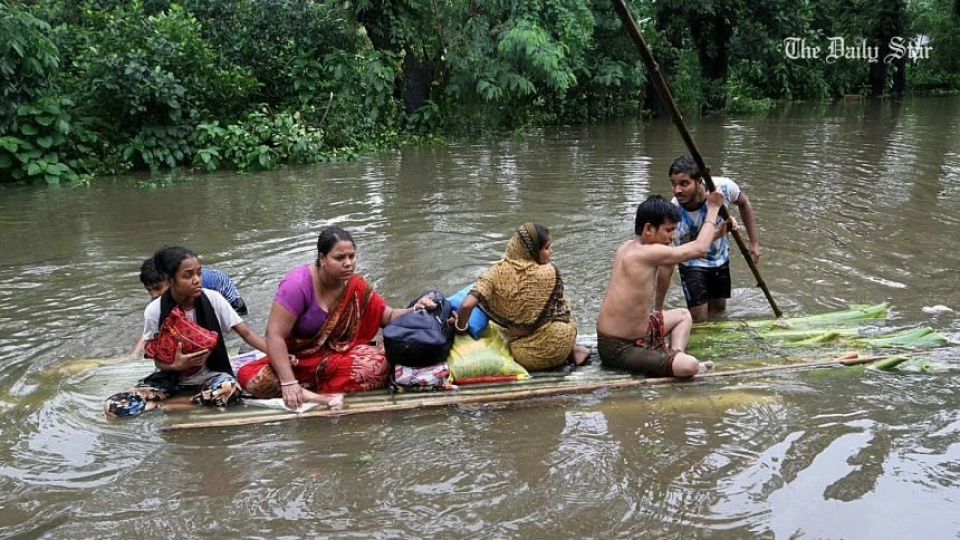February 21, 2025
DHAKA – For thousands of Bangladeshis fleeing climate disasters, migration offers a desperate escape but at a grievous cost.
According to a survey by the International Institute for Environment and Development (IIED), almost every person who has migrated abroad from Bangladesh’s climate-vulnerable regions has suffered at least one form of modern slavery while working.
The IIED study, “Exposed and Exploited: Climate Change, Migration and Modern Slavery in Bangladesh,” published yesterday, states that modern slavery takes many forms. Those surveyed reported experiencing wage withholding, restricted movement, abusive conditions, threats, intimidation, and even physical violence.
The study surveyed 648 households across 33 villages in 19 unions — 10 in Pirojpur’s Mathbaria and nine in Sylhet’s Gowainghat — selected for their high climate vulnerability. Of these, 70.06 percent were migrant households (internal and international), while 29.94 percent were non-migrant.
The survey was conducted in 2023 and 2024 by IIED and Ovibashi Karmi Unnayan Program (OKUP), with funding from the UK Home Office’s Modern Slavery Innovation Fund.
The report states, “Among internal migrants, 92 percent experience at least one form of modern slavery, with more than 52 percent enduring more than three forms. For international migrants, the prevalence of modern slavery is even more alarming, with 99 percent reporting at least one form and 81 percent experiencing more than five forms.”
The crisis is rooted in climate change, it adds.
Over the past six decades, climate-related disasters in Bangladesh have nearly doubled, rising from four per year before 1990 to seven per year after.
Cyclones, river erosion, and saltwater intrusion have destroyed crops, drowned livestock, and wiped out savings, leaving several families with no choice but to move, the report states.
“In some of the hardest-hit areas, like Pirojpur and Sylhet, 99 percent of residents report rising temperatures, while 90 percent say river erosion has worsened.”
With livelihoods collapsing, migration has skyrocketed.
Around 84 percent of the families have moved to cities like Dhaka, Khulna, and Chattogram since 2011 in search of work — often in exploitative industries.
Another 88 percent have sent relatives abroad, mostly to Gulf nations, where many face extreme working conditions.
The study further found that households facing higher climate risks are 161 percent more likely to migrate internally and 214 percent more likely to migrate internationally — highlighting the critical role of climate-induced shocks in driving distress migration.
Households with better education and larger landholdings are 356 percent more likely to migrate internationally, reflecting the dual nature of migration as both a coping and adaptive strategy, the report adds.
Ritu Bharadwaj, an IIED principal researcher and co-author of the paper, said, “There’re systems that can soften the blow, like the rural employment guarantee scheme used in neighbouring India. As a low-income country, Bangladesh may need international help to institute something similar, but a work programme that focuses on creating disaster-resilient infrastructure could be a huge boost for the people most affected by the warming climate.
“It could also help protect them from exploitative employers who prey on desperate economic migrants. These disturbing statistics show how important it is to tackle modern slavery.”
As part of a plan to make migration safe, the study calls for a range of interventions, including climate finance investments in early warning systems, more resilient crop varieties to lessen the impact of environmental change, and regulation of recruitment agencies.


